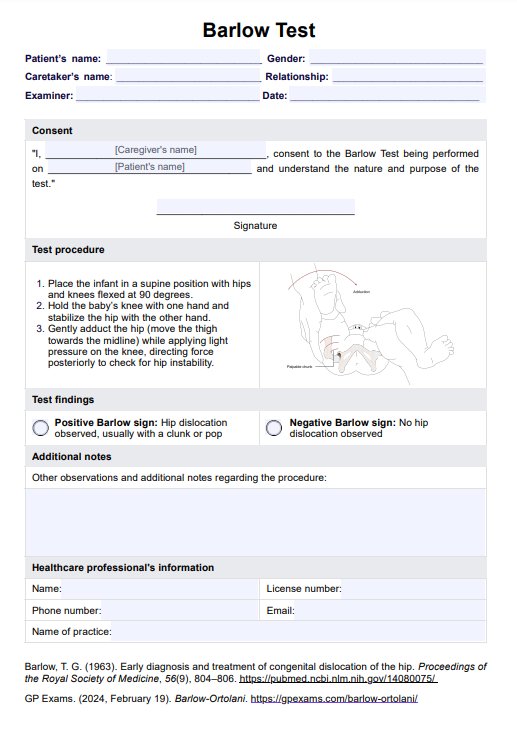Developmental dysplasia of the hip (DDH) is primarily checked using physical examinations like the Barlow and Ortolani tests in newborns, supplemented by imaging techniques such as ultrasounds or X-rays for a definitive diagnosis.

Barlow Test
Screen young patients for hip dysplasia consistently and efficiently with our customizable Barlow Test template. Try it today for free.
Use Template
Barlow Test Template
Commonly asked questions
The Barlow Test checks if the hip can be dislocated through adduction, indicating instability, while the Ortolani test checks if a dislocated hip can be relocated back into the socket through abduction, confirming dislocation.
A positive Barlow sign indicates that the hip can be dislocated from its socket, suggesting hip instability or looseness that may be due to DDH.
EHR and practice management software
Get started for free
*No credit card required
Free
$0/usd
Unlimited clients
Telehealth
1GB of storage
Client portal text
Automated billing and online payments











